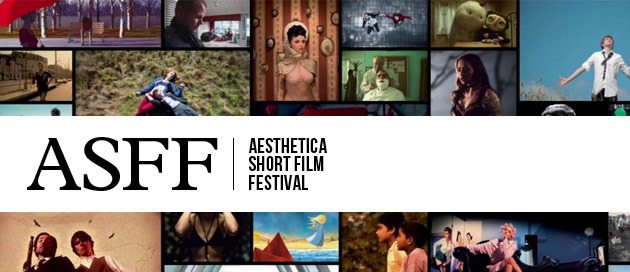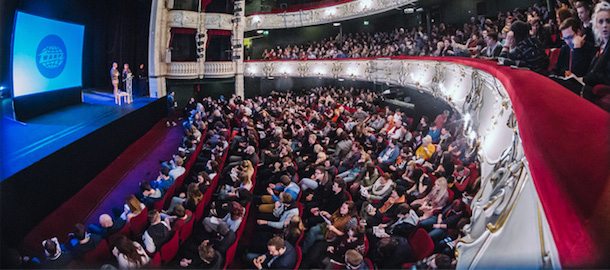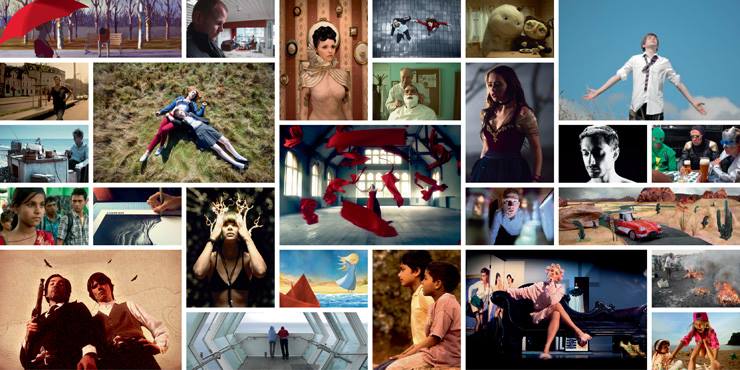The Aesthetica Short Film Festival 2013
Can we still call short films relevant? On the weekend of 7th November, I travelled to the Aesthetica Short Film Festival (ASFF) to find out. The festival returned to York welcoming floods of filmmakers, industry professionals and spectators alike to champion the best that short film has to offer. The event, now in its third year, boasted over three hundred shorts from thirty different countries, each of which were screened within an eclectic choice of venues across the heart of the city. Over my three day stay, I visited museums, medieval halls and art galleries, though not for the reasons you might expect. The festival transformed these iconic locations into screening spaces where audiences were able to watch the most cutting-edge short films whilst surrounded by the impressive grandeur that York is famous for.
The first day began with an impressive array of master classes and discussions from industry professionals, including Warp Film’s Barry Ryan, sound editor Joakim Sundstrom (who most recently worked on Filth) and Film4’s Tom Leggett. On the Saturday night, the ‘Meet the Filmmakers’ event took place within the immense stonewalls of York Museum, giving attendees the chance to listen to first-hand experiences from the filmmakers themselves. Although it was Manjinder Virk’s Out of Darkness, starring Tom Hiddleston and Riz Ahmed, which ultimately picked up the Overall Festival Winner award, I want to talk about the films which spoke the loudest to me as a young filmmaker who is relatively new to the changing world of shorts.
The documentary category exhibited a truly stunning spectrum of films. One that shone particularly brightly was Meghna Gupta’s Unravel, a warm yet thought-provoking film following the thousands of unwanted clothes thrown away by the Western world every year. Beautifully shot and carefully crafted, the documentary delves into the lives of the women who work in the Indian textile-recycling factories which process the garments. It is not only an enlightening piece but also an inspiring portrayal of the women themselves: ultimately it is they – with their optimism, humour and imagination – who become the real fabric of the film. These lively women simultaneously worship and denigrate the relative luxury that we live in: to them it seems both amazing and ridiculous. Within the same category came Margarida Paiva’s I Will Hurt You Before You Hurt Me. Memorable for both its vivid cinematic aesthetic and unsettling subject matter, this Norwegian documentary centres around real interviews with women who have been convicted of murder. It is quietly shocking work: the calm, frank honesty with which they talk about their crimes makes it simultaneously intriguing and devastating. The languid, haunting visuals that accompany these testimonies serve only to heighten this uneasy contradiction.
What makes these two films similar is that they both provoke intrigue. I was left with a burning desire to find out more about the worlds that I’d been offered a glimpse of. And I think that it is precisely this quality that makes the short film genre so powerful. Due to its brevity, the short becomes imbued with a concentrated intensity, far more poetic than any full-length film I have seen: each moment expands, magnifies and gains significance. People have said that the only real difference between shorts and features are the length, yet I’m realising now that I wholeheartedly disagree. Short films function in a totally different way from their lengthier counterparts. There is a different kind of communication and configuration involved in short film- making, a different set of codes which makes the experience of watching them something unique; they provide you with a keyhole in to another world, a snippet of life that lets your imagination wonder long after the closing credits.
Due to its brevity, the short becomes imbued with a concentrated intensity, far more poetic than any full-length film I have seen: each moment expands, magnifies and gains significance.
The most stimulating visuals arguably came from within the animation category. The picks for this year drew the audience into some truly magical worlds. Lost Senses (Marcin Wasilewski), Here to Fall (Kris Kelly) and The Secret of the Ice Flower (Jacob Ley) all provided examples of true artistic brilliance, yet it was Will Anderson’s BAFTA award winning The Making of Longbird that seemed most relevant to modern day concerns. The film comically maps an animator’s struggle to revive and revamp the legendary animated character, Longbird, from his demise in Russia a century ago. His attempts at making the character suitable for the digital age of film consumption are entertaining, yet also pose the question: what effect does the changing face of technology have upon an artist’s creative process?
The position that short filmmakers hold in today’s digital environment is an issue that came up repeatedly throughout the festival. The panel discussion at the ‘Meet the Filmmakers’ event on Saturday night, led by film critic Tony Earnshaw, saw the filmmakers themselves tackle this very concern. They highlighted that, with the encroaching presence of the Internet on every aspect of our lives, a duality has become apparent. Though the Internet’s enormity means that films can be distributed on an infinitely wider and cheaper level to larger audiences, it also means that, in a sense, these films are devalued. Similarly, the greater accessibility of affordable filmmaking equipment means that almost anybody can make a film. This is of course brilliant, but without the boundaries that previously existed, the general quality of filmmaking arguably suffers. Ultimately, young filmmakers are both blessed and cursed by the accelerating digital environment. As director and panelist Curt Apduhan phrased it that night, ‘now is the most exciting time to be a short filmmaker’.
Indeed, this was clear from the wide variety of international short films that ASFF exhibited: I saw films from Japan, Belgium, Israel, Poland, Morocco and many more during my stay. I particularly enjoyed the Kuwait film slot, which screened four films each depicting different perspectives of life in the country. Moustache by Meqdad Al Kout, is a short comedy about a man who can’t grow a moustache. The casting of the luckless protagonist is impeccable; his defeated facial expressions command the mock pathos that characterises the film as a whole. Jassim Al Nofaly’s Panda provided a similarly comical portrayal of masculinity, in which a man is forced to abandon his childhood toy on the eve of his wedding.
Having spent three days watching a plethora of rich, unique shorts, I returned to my normal life with a sense of disappointment – I began to realise the lack of the short film genre within mass culture. These films don’t fill our cinema screens and are rarely shown on television. Most people I’ve spoken to couldn’t name more than a handful of short films. It is both an underrated and under-recognised form within mainstream entertainment. Indeed, in his talk at the festival, Warp Film’s Barry Ryan acknowledged that shorts never make any money: of the little profit that is made, fifty per cent goes to the exhibitors and the rest is split evenly between the distributors and the filmmakers. Many short filmmakers candidly admit that their main reason for making shorts is to use them as part of a portfolio or as a platform to making features, and nothing else. It is therefore fairly safe to say that most people don’t see short films as playing a big part in their lives.
Yet I genuinely can’t fathom why this is the case. In an accelerating world where speed is central to good communication, and the faster we can absorb information the better, why are short films not the most popular form of entertainment? The momentum of our digital world means we are being swept up in an increasingly strong current, needing our senses to be bombarded with media in order to keep them interested. We consume it with the ready acceptance, even expectation, that it be quick, sharp and rewarding. Our phones must have the fastest Internet connection, our messages a maximum of one hundred and forty characters, and even our pictures now thrive on time limits (thanks Snapchat)! If brevity is what is demanded in other forms of media, why is the same not true for film? Why don’t the films I saw in ASFF fill our cinemas, or get the media attention that films such as The Hunger Games or Gravity are getting right now? Surely our generation is primed for a short film revolution.
The vehicle of short film is integral to the running of the mass media – that much is undeniable. Links to music videos and adverts are constantly filling our newsfeeds, increasingly becoming platforms for social discus- sion and political debate. Music videos, such as Miley Cyrus’ Wrecking Ball, spark outrage and controversy on a regular basis, and in do- ing so become a language we use to analyse contemporary discourses. On a similar level, the attention that the John Lewis Christmas ads (though I would call them short films) receive means they’re steadily becoming a staple part of our television viewing in winter months: this year’s “The Bear and the Hare” has so far attracted over seven million views on Youtube.
Although most music videos and adverts aren’t generally considered short films in the traditional sense, they do use the short film format. And their popularity serves as evidence that the short film genre could, and should, be playing a bigger part in the entertainment industry. What is needed now is a greater recognition and celebration of the genre. Fortunately, there are spaces such as the Aesthetica Short Film Festival that are doing just this, functioning as proud reminders that short films are stronger, better and more relevant than ever.



Comments